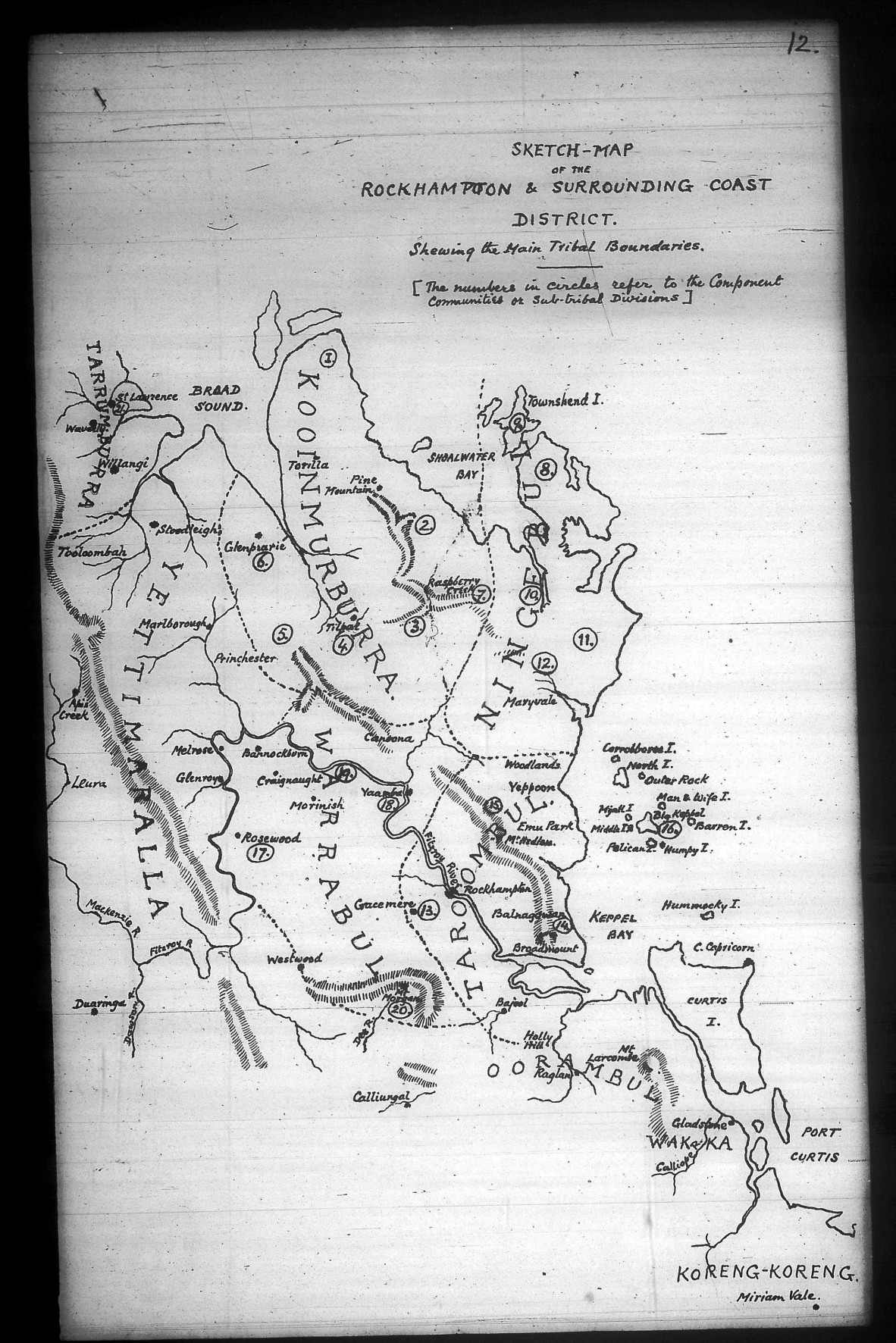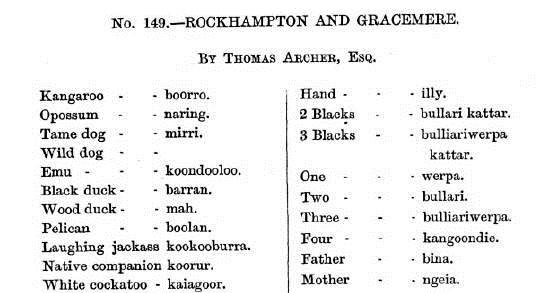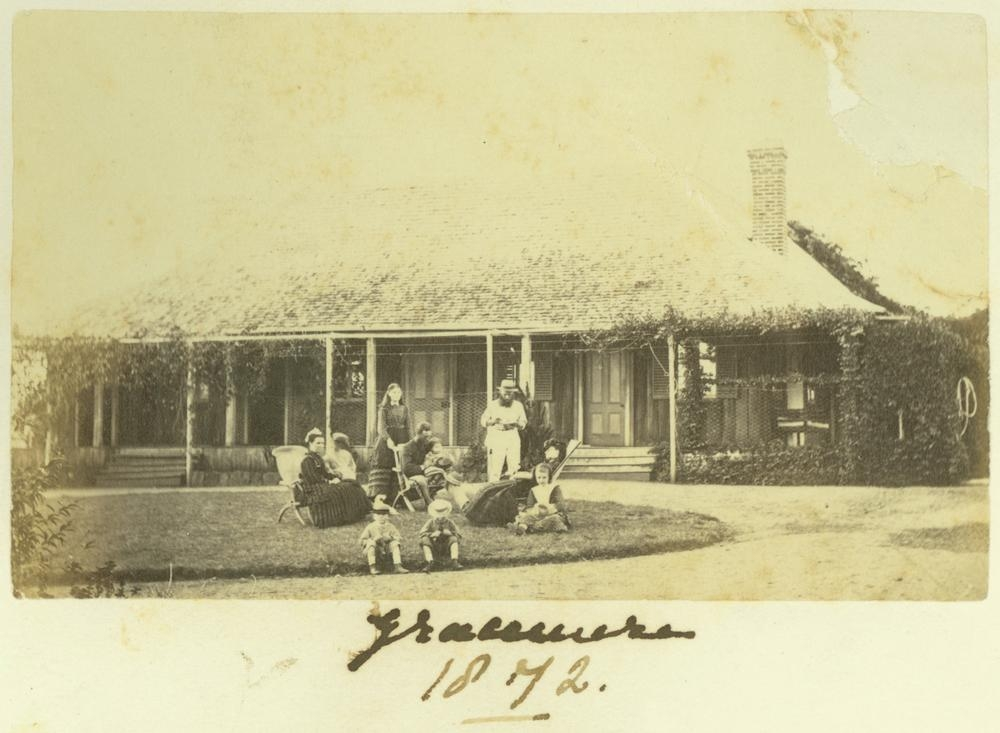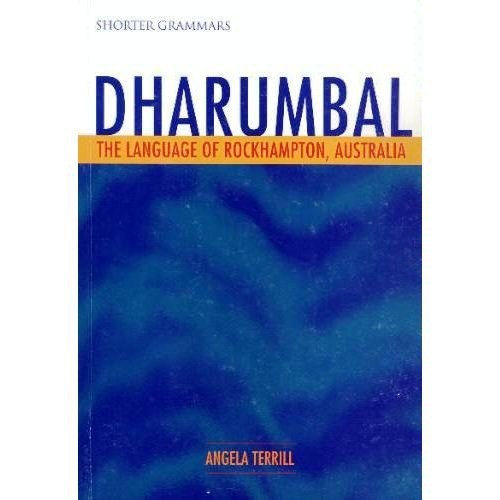Recently, the Fitzroy Basin Elders Committee invited the State Library of Queensland to present a languages workshop as part of the Our Land, Business and Resources symposium. The State Library's Indigenous Languages Project for 2012-2013 builds upon the success of the Indigenous Languages Research Discovery workshops and is partnering with community organisations to co-host regional workshops. From this starting point, State Library was able to work with a small, but passionate group of community members in Rockhampton.

The above Map, compiled by W E Roth in 1898, generated a lot of discussion within the group - this image is part of a State Library collection item entitled 'The Aborigines of the Rockhampton and surrounding coast districts : by Walter E. Roth, July 1898' which forms part of "Reports to the Commissioner of Police and others, on Queensland aboriginal peoples 1898-1903". This item is available on Microfilm and contains vocabularies from several groups within the Central Queensland region, including Dharumbal, Gangulu, Wappaburra, Kuinmabara and Yetimarala.

Walter Edmund Roth in his role as Chief Protector of Aborigines for Northern Queensland compiled several reports, including ethnological studies, which he presented to the Queensland Government. This historical document represents some of the earliest linguistic material relating to the Rockhampton Region and is a valuable resource for communities.

Another historical collection of Aboriginal words was documented by Thomas Archer, an early pastoralist who established Gracemere, via Rockhampton in 1853. Archer forwarded this list to E M Curr who published it along with several other vocabularies from Central Queensland, in his monumental work The Australian race : its origin, languages, customs, place of landing in Australia, and the routes by which it spread itself over that continent, a four-volume continental survey of Aboriginal peoples. This work included vocabularies from over 200 Aboriginal groups across Australia - Curr requested Pastoralists, Government Officers, Police and other 'gentlemen' to assist in the task by compiling lists from Aboriginal natives in their vicinity. The Archer Family had Aboriginal workers on the property who provided the language words for Curr's list - the language is not clearly identified but is believed to be Dharumbal.

Holmer also undertook research into the languages of the area, particularly Dharumbul which he included in his 'Linguistic Survey of South-Eastern Queensland' (1983). This historical linguistic material was later compiled and analysed by Angela Terrill in her 2002 publication 'Dharumbal: the language of Rockhampton, Australia'. Terrill has identified four distinct dialects of Dharumbal which was spoken across the region from Raglan, Rockhampton, Yaamba as well as the Keppel Coast and off-shore islands.

Complementing this somewhat limited collection of published materials is the knowledge of the community. All participants at the workshop had some knowledge that was passed down through family sources, including several who had wordlists and one community member who had copies of recordings made in the 1960's. In addition, several had ancestors who were interviewed by Gavan Breen when he undertook linguistic surveys at Woorabinda, Duaringa and other Central Queensland locations. Many had strong affiliations with the local languages, particularly Dharumbal and Gangulu.
While languages and language revival was the focus of the day, there was also plenty of opportunity to share stories and histories from the region. In the audience were several people who had first hand knowledge of my Grandmother's older brother who was 'removed' from Goondiwindi to Taroom Mission in 1913 and later to Woorabinda in 1926. They shared their memories of Great Uncle Roley living with their families working along the railway lines in the Blackwater and Duaringa areas. This was a common strand to the day as many of the participants had family ties back to South-West Queensland, including Cunnamulla, Goondiwindi, Mitchell and St George. Others had links to Springsure and Rolleston which was the top end of the Bidjara language group. Other South-Western Queensland languages present in the room were Gamilaraay, Gunggari, Yiman and the relatively unknown Nguri.

This extract from Harriett Barlow shows a selection of words collected from South-West Queensland in the 1870's - Nguri (Ngoorie) language ranged along the Upper Maranoa River between the Bidjara and Gunggari language groups. Barlow's husband Alexander Barlow took over Warkon Station, via Roma in 1858. During the 1860-70's Harriet collected words from Aboriginal workers at Warkon as well as neighbouring properties and later published these comparative tables as part of her 'Aboriginal Dialects of Queensland'. The John Oxley Library holds Harriet Barlow's Manuscript which features her original material and notes on eight languages of the region. Approximately 150 Nguri words can be found in this manuscript.
The group was very keen to see the languages of the region 'awakened' from their sleep and being used again on a daily basis. This tied in with the theme for the Symposium which explored the management of land and cultural heritage through the active engagement of Aboriginal communities. Currently, there are a number of community groups working to revive their language, including the Fitzroy Basin Elders and Aunty Nyoka Hatfield who have been teaching Dharumbal language in local primary schools. State Library has also been working with community members from Woorabinda as they 'map' all of the languages found there. Miromaa software program was suggested as an effective way for communities to store and document their language knowledge.
Participants were given a language resources CD-ROM which contained digital materials pertaining to the languages of the region and provide advice on State Library activities that can support the preservation, documentation and revival of languages. Additional materials relating to the languages of the region are held at the Australian Institute of Aboriginal and Torres Strait Islander Studies (AIATSIS) in Canberra. At a local level, support for community language revival is also provided through the Central Queensland Language Centre, based at Gidarjil Development Corporation, Bundaberg.
It was great day spent in Rockhampton with lots of opportunities for networking and sharing stories about the traditional languages of Central Queensland.
Des Crump - Indigenous Languages Researcher, State Library of Queensland
Comments
Your email address will not be published.
We welcome relevant, respectful comments.